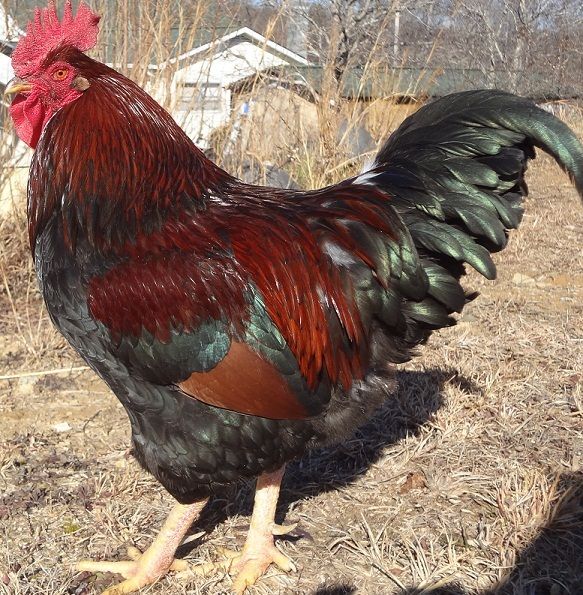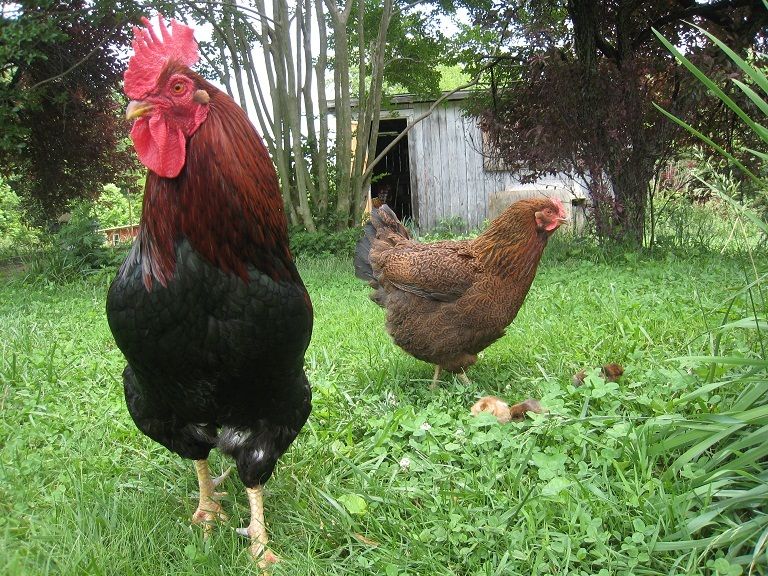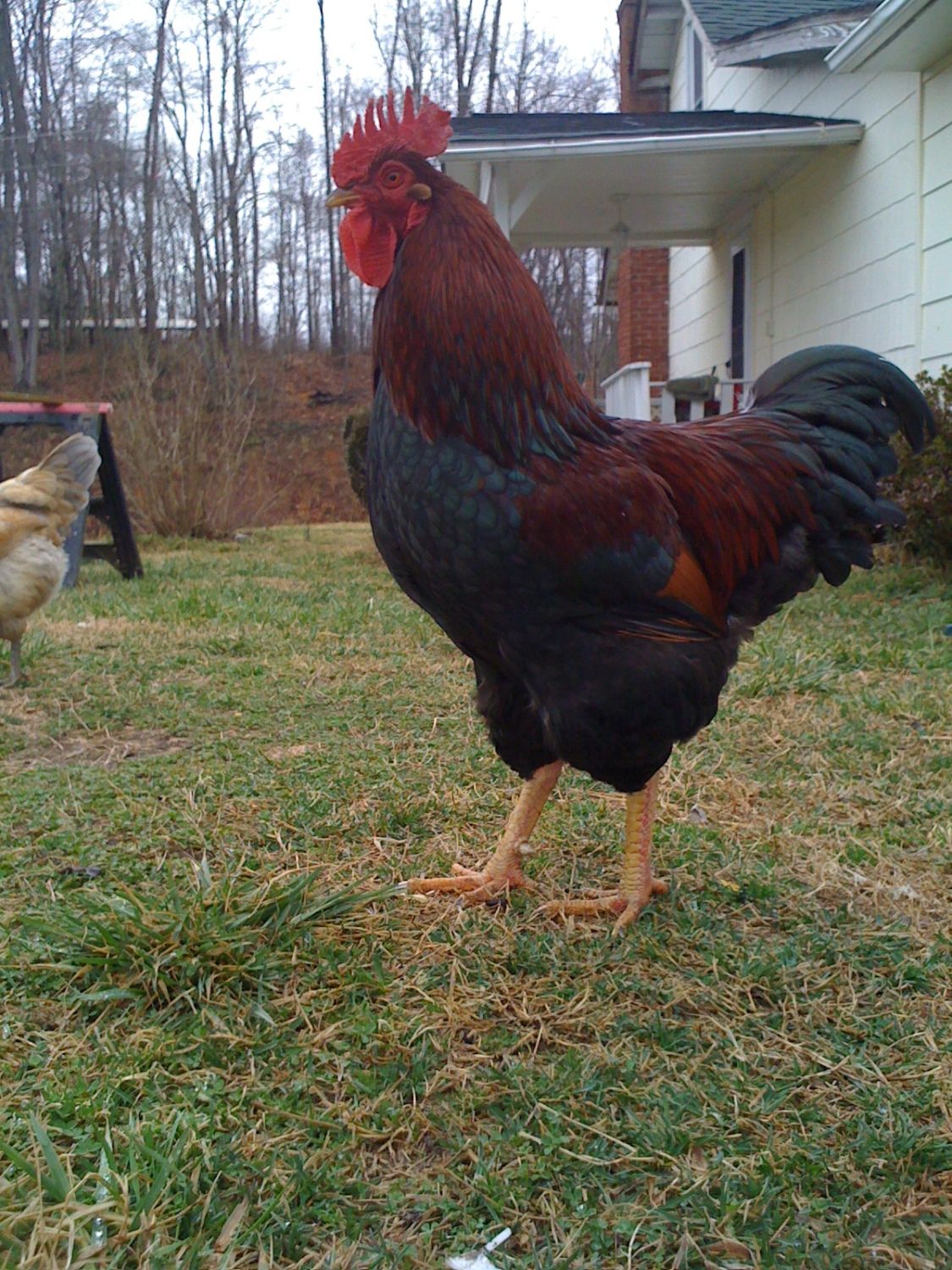I have chickens with Pg allele that when homozygous in the company of Db/- or Db/Db produces the redquill color pattern. Birds lacking the Db allele have hints of the redquill pattern but base coloration is much lighter (reddish) and down coloration of chicks is very different. Does anyone have pictures showing their birds that are Pg but lack Db? Mine also on wildtype e+ background.
Navigation
Install the app
How to install the app on iOS
Follow along with the video below to see how to install our site as a web app on your home screen.
Note: This feature may not be available in some browsers.
More options
You are using an out of date browser. It may not display this or other websites correctly.
You should upgrade or use an alternative browser.
You should upgrade or use an alternative browser.
Phenotype of Automal Barring (Pg) without Dark Brown (Db)
- Thread starter centrarchid
- Start date
More options
Who Replied?- Thread starter
- #2
Following images part of what I think I know.
First shows how how full sibling chicks can look at hatch with respect to Pg allele. Note not only are stripes different in width, they differ in how strongly they contrast with surrounding down. Wheaton at E-locus not involved based on Wheaton birds never thrown. Birds not pumpkin since black of flight feathers is not diluted.
Left is e+/e+ -/- or wild-type
Middle is e+/e+ Pg/- like both parents were at hatch.
Right is e+/e+ Pg/Pg
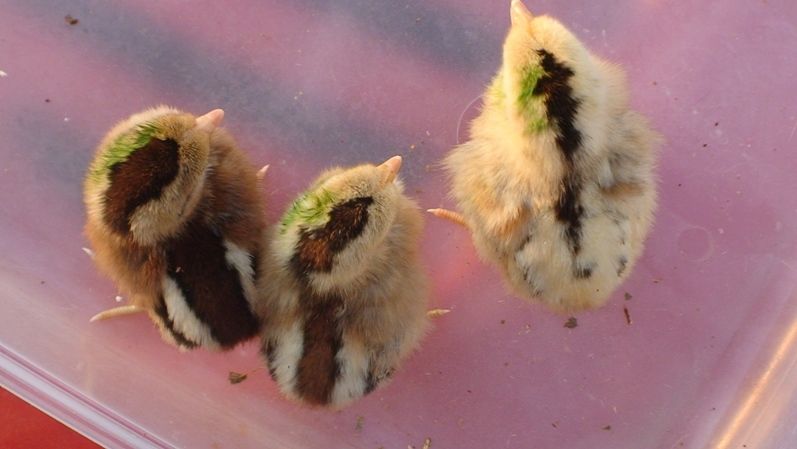
Second shows Pg/Pg cockerel intering first adult feather set

Grand father as entering first adult feather set. He is common source from which Pg allele was inherited. He was Pg/- and similar to middle chick at hatch. His body plumage is much darker than Pg/Pg cockerel above.
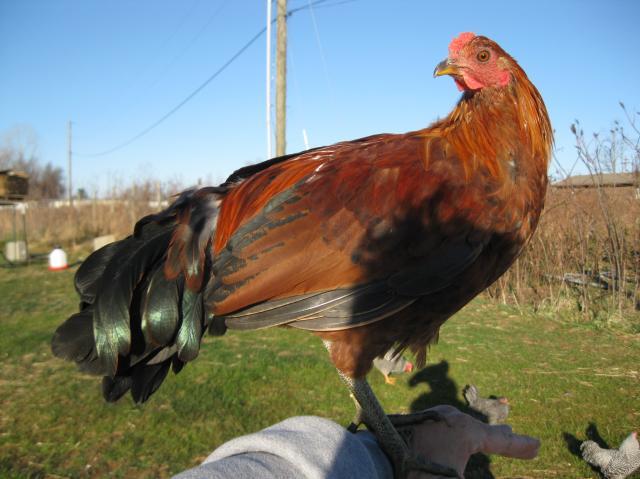
Grandfather as adult.
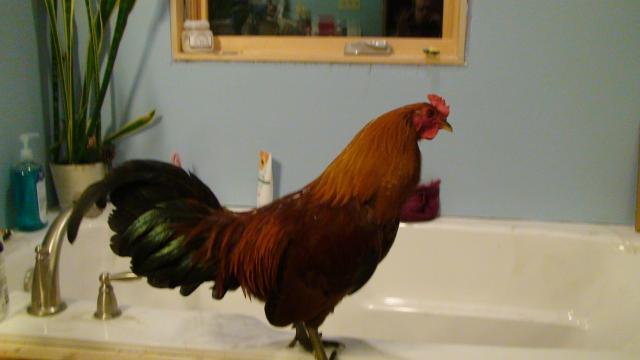
First shows how how full sibling chicks can look at hatch with respect to Pg allele. Note not only are stripes different in width, they differ in how strongly they contrast with surrounding down. Wheaton at E-locus not involved based on Wheaton birds never thrown. Birds not pumpkin since black of flight feathers is not diluted.
Left is e+/e+ -/- or wild-type
Middle is e+/e+ Pg/- like both parents were at hatch.
Right is e+/e+ Pg/Pg

Second shows Pg/Pg cockerel intering first adult feather set

Grand father as entering first adult feather set. He is common source from which Pg allele was inherited. He was Pg/- and similar to middle chick at hatch. His body plumage is much darker than Pg/Pg cockerel above.

Grandfather as adult.

Last edited:
without Db there is no autosomal barring, not on the males atleast, the females may look different than your everyday wildtype e+/e+ pg+/pg+ db+/db+ birds, but a wildtype rooster with just Pg/Pg and db+/db+ will not be restricted at all(black tail red or black tail orange) and Pg is just a pattern gene not a restrictor.I have chickens with Pg allele that when homozygous in the company of Db/- or Db/Db produces the redquill color pattern. Birds lacking the Db allele have hints of the redquill pattern but base coloration is much lighter (reddish) and down coloration of chicks is very different. Does anyone have pictures showing their birds that are Pg but lack Db? Mine also on wildtype e+ background.
I dont know any wildtpe based breed with just Pg and nothing else(all other genes wiltype). I dont think this type of breed exist. BUT.. there is the Partridge wyandotte. Partridge Rock breeds which are just eb(eb brown) and Pg/Pg with all other genes been wildtype(except for red enhancers)
Last edited:
- Thread starter
- #4
Are you considering the lighter coloration chick on right a dilution relative to wild-type? I think it is a restricter or pattern mechanism. Note the chick on rights darker stripe even though it is smaller. A diluter would simply make part or all of down lighter.
- Thread starter
- #5
What other simple system can cause color patterns I am seeing if not Pg? The variations in down coloration I think are key. Phenotypes are 1/4 wild-type, 1/2 intermediate, and 1/4 very light. What genotypes can cause the observed chick down colorations be they patterns or dilutions?without Db there is no autosomal barring, not on the males atleast, the females may look different than your everyday wildtype e+/e+ pg+/pg+ db+/db+ birds, but a wildtype rooster with just Pg/Pg and db+/db+ will not be restricted at all(black tail red or black tail orange) and Pg is just a pattern gene not a restrictor.
I dont know any wildtpe based breed with just Pg and nothing else(all other genes wiltype). I dont think this type of breed exist. BUT.. there is the Partridge wyandotte. Partridge Rock breeds which are just eb(eb brown) and Pg/Pg with all other genes been wildtype(except for red enhancers)
Note hen below which is mother of chicks above and full sister to sire of chicks. What color pattern would she be classified under.


I´m not considering any chick color at this stage. I was just pointing out that a e+/e+ Pg/Pg db+/db+ rooster will NOT look autosomal red because it lacks the columbian restrictor DbAre you considering the lighter coloration chick on right a dilution relative to wild-type? I think it is a restricter or pattern mechanism. Note the chick on rights darker stripe even though it is smaller. A diluter would simply make part or all of down lighter.
What other simple system can cause color patterns I am seeing if not Pg? The variations in down coloration I think are key. Phenotypes are 1/4 wild-type, 1/2 intermediate, and 1/4 very light. What genotypes can cause the observed chick down colorations be they patterns or dilutions?
Note hen below which is mother of chicks above and full sister to sire of chicks. What color pattern would she be classified under.


Pg is not a diluter, aside from been a pattern gene, one could also call it a melanizer if you must. but it will not affect the chick or the adult pheomelanin(gold pigment).. your hen seems diluted by other gene/s.. maybe Dominant Dilute Di? does her genetic background has any pumpkin? that could explain a few things
- Thread starter
- #8
No pumpkin involved. Part of genetics required to make a pumpkin may be present but no birds of pumpkin ancestry could have been involved for a very long time and I know range of phenotypes that flock exhibited because I grew up with it and have good knowledge of pedigree within it. These are not birds acquired from a hatchery or some backwoods cocker that allowed hens to be covered by any rooster that fit their fancy.
The chick coloration is key to figuring out what locus / alleles are involved. Several genotypes can give similar phenotypes in adult male but chicks and juveniles vary big time as a function of genotype.
What does a proper pumpkin hen look like? What does a proper pumpkin chick look like?
The chick coloration is key to figuring out what locus / alleles are involved. Several genotypes can give similar phenotypes in adult male but chicks and juveniles vary big time as a function of genotype.
What does a proper pumpkin hen look like? What does a proper pumpkin chick look like?
- Thread starter
- #9
Hen I assume to be dark brown Db. This phenotype I no longer have but when bred to roosters looking like the males above, redquill chicks and hens are produced. Males of same that were not redquill as chicks are difficult to distinguish from redquill roosters without scrutenizing individual feathers. Owing to that, we consider all such roosters with red-brown body and black tail to be brown-breasted brown reds.

I am working to acquire another hen (related to my line) that looks like hen above. I assume that if redquill are produced by mating of such with cockerel in second post, that autosomal barring Pg is in fact causing the observed appearance in cockerel and modifications to chick down.

I am working to acquire another hen (related to my line) that looks like hen above. I assume that if redquill are produced by mating of such with cockerel in second post, that autosomal barring Pg is in fact causing the observed appearance in cockerel and modifications to chick down.
New posts New threads Active threads
-
Latest posts
-
Sealing "chic-nic" table and swing
- Latest: DuckNana207
-
-
-
-
-
-
Latest threads
-
Sealing "chic-nic" table and swing
- Started by DuckNana207
- Replies: 0
-
-
What colors will this EE feather out to be?
- Started by Leeloo7
- Replies: 0
-
-
Dirty chicken butt
- Started by free range by day
- Replies: 0
-
-
Threads with more replies in the last 15 days
-
-
Open Contest 2026 BYC Calendar Photo Contest - We Need Your Pictures!
- Started by casportpony
- Replies: 113
-
-
Ended Official BYC Poultry Caption Contest 05-02-25 Pic by My Very First 6 Chickens
- Started by TwoCrows
- Replies: 59
-
-
×



